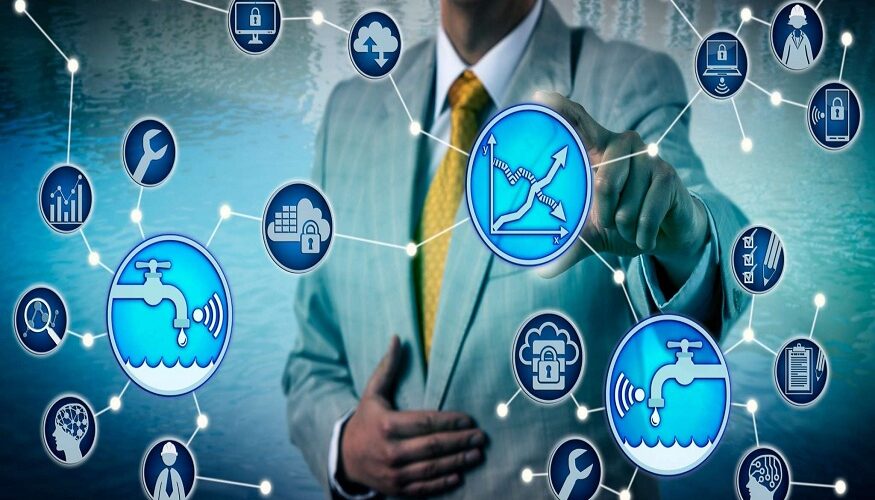Water is a crucial natural resource on Earth, and managing it is vital. Today, the world grapples with a major issue: water scarcity. This challenge arises from both climate change and the growing global population. Water management systems based on the Internet of Things, or IoT, can improve water use and cut down on water wastage. This article will go over ten of the main advantages of iot water management.
1. Remote Monitoring and Control
Water quality, consumption, and levels can all be remotely and instantly monitored using IoT devices. Water pressure, flow, temperature, as well as other parameters may be remotely monitored by installing sensors in pipes, tanks, as well as in other equipment. Users and utilities receive notifications regarding problems such as overflows or leakage on their mobile applications. Supply may be managed from a central control room thanks to IoT-powered remote control valves. This makes problems easier to find and address without requiring a physical check.
2. Early Detection of Leaks
IoT sensors have the ability to locate even tiny leaks that would be hard to uncover otherwise. To locate leaks, they track flow as well as listen for strange noises. Early identification enables leaks to be fixed before they get worse and start wasting a lot of water. When machine learning algorithms are applied to examine smart infrastructure technology metering data, anomalous usage patterns that suggest leakage can be found. Customers avoid unexpectedly large bills from leaks that go undetected, as well as utilities save money on non-revenue water losses.
3. Optimized Watering
Based on current soil moisture levels, meteorological information, as well as plant requirements, IoT enables optimum landscape irrigation and watering. Control systems receive the soil water content data from wireless soil moisture sensors. Watering only as necessary to maintain ideal soil moisture levels without overwatering is accomplished by automatically adjusting sprinklers as well as valves. This minimizes runoff and maximizes water use. Additionally, the systems enable zones to water various regions according to their demands as well as customizable timetables.
4. Demand Management
Utilities can better comprehend demand peaks and trends with the use of IoT. To predict demand, they might examine past consumption data as well as meteorological trends. Utilities can use IoT to remotely regulate or limit non-essential consumption during periods of high demand, for example, postponing landscape watering via smart irrigation controllers or control valves. This prevents shortages as well as guarantees the fair allocation of scarce resources. Additionally, demand control aids in postponing costly capacity development initiatives.
5. Water Quality Monitoring
The Internet of Things makes it possible to monitor water quality metrics in real time at source intakes and across the distribution network, such as pH, turbidity, as well as chlorine levels. A centralized control system receives data from wireless sensors to be analyzed. By doing this, contamination problems may be identified early as well as quickly resolved. If the quality falls beyond certain bounds, utilities are also notified. Water quality compliance as well as safety are guaranteed by ongoing monitoring.
6. Non-Revenue Water Reduction
By preventing leaks, unauthorized connections, inaccurate metering, as well as other issues, IoT systems can minimize non-revenue water (NRW) losses. Smart metering detects unusual consumption patterns. Solutions for leak detection locate leaks quickly. When combined, these greatly lower the amount of water wasted before it can be invoiced, increasing sustainability as well as utility income. It is also possible to redistribute the conserved water.
7. Analytics and Insights
Analytics-based analysis of vast amounts of IoT-generated data yields insightful information on use trends, infrastructure performance, as well as other topics. Utilities receive a thorough understanding of the whole water system. Predictive maintenance helps to foresee problems. Users receive user data along with money-saving advice. In order to improve decision-making as well as planning, data is also used to size infrastructure, plan capital projects, and create “what if” scenarios.
8. Affordable Housing Developments
The reliability of smart water management systems for affordable housing developments is made possible by IoT. In a big community, sensor networks, as well as control systems, keep an eye on consumption as well as identify problems. Meters monitor consumption in each apartment. Detecting leaks early prevents water waste. Supply equity is ensured through optimization. Maintenance may be done remotely without disturbing the occupants. Communities can now afford water management because of this.
9. Revenue Generation
IoT data-driven revenue models are being investigated by several utilities. Customers who are not residential can sign up for reports as well as use tracking, which lowers expenses. Municipalities and companies are also sold reports and insights derived from studied data by utilities. Industry demanding certain requirements is sold data on water quality as well as pressure. Demand response initiatives encourage reducing consumption during busy times. These all produce fresh sources of non-tariff income.
10. Improved Customer Experience
IoT makes it possible for utilities as well as consumers to communicate in both directions. Apps offer warnings, use statistics, as well as access control across all platforms. IoT insights provide faster response to queries. Manual meter reading is eliminated with automated reading. Consumers use in-home display devices to independently identify problems and get bills on time. Customers are more satisfied with water services when there are self-service choices as well as openness.
Conclusion
Globally, IoT is transforming water management by allowing more efficient operations, lower losses, lower costs, as well as new income sources for utilities. Even with increasing demand, water sustainability is ensured through remote monitoring via apartment management app, control, as well as analytics. The environment as well as public health are safeguarded via early issue discovery. Customers might save more when there is optimized utilization. All things considered, IoT is revolutionizing the water industry through efficiency as well as digitization.

